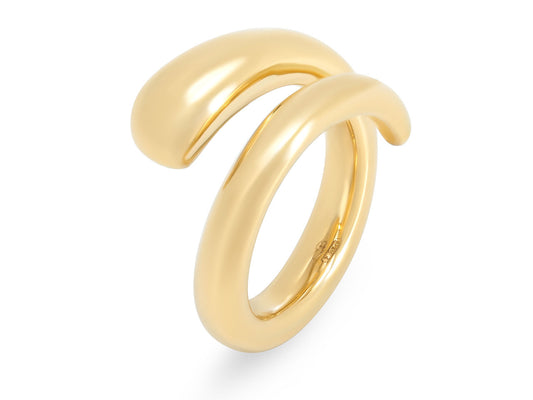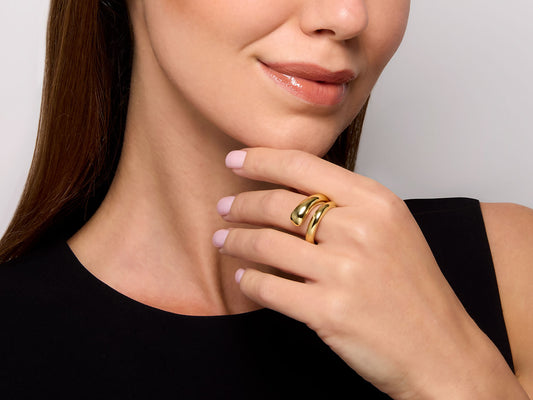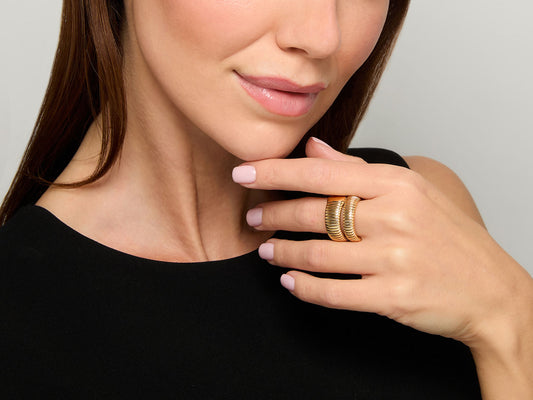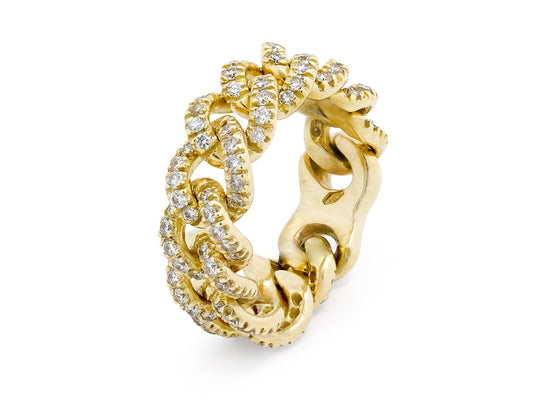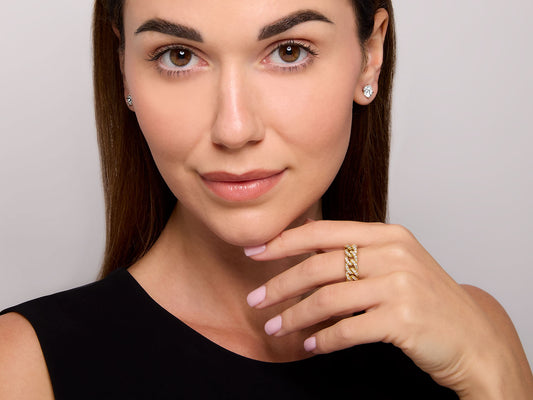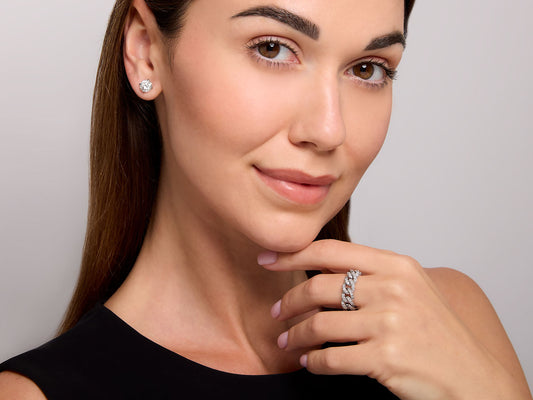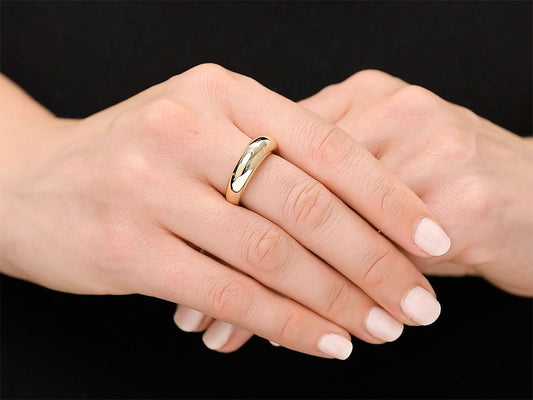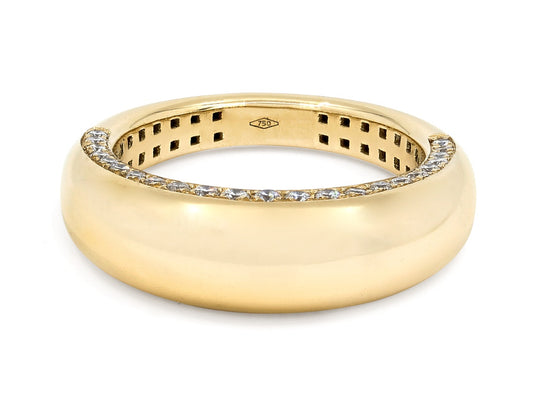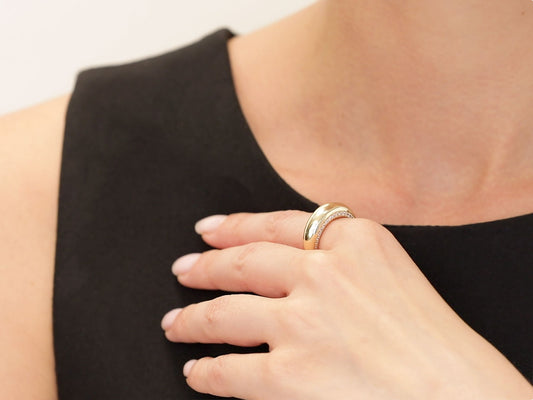-
Snake Wrap Ring in 18K Gold, by Beladora
RNG-518611Price $2,850PriceUnit price per -
Tubogas 'Snake' Ring in 18K Gold, by Beladora
RNG-518011Price $2,350PriceUnit price per -
Diamond Link Ring, by Beladora, in 18K Gold
RNG-513178Price $4,850PriceUnit price per -
Diamond Link Ring, by Beladora, in 18K White Gold
RNG-513179Price $4,850PriceUnit price per -
Bombé Gold Ring in 18K, by Beladora
RNG-513181Price $1,950PriceUnit price per -
Bombé Gold Ring, with Diamonds, in 18K, by Beladora
RNG-513180Price $3,550PriceUnit price per
FAQs
Is there a difference between Italian and other gold?
There is absolutely no difference in gold as a material used by jewelry makers the world over. Gold is gold is gold, be it yellow or white, 14 karat, 18 karat or 24karat, but there is a difference in the quantity and quality of the design and manufacture of pieces Made in Italy. Italy wears the crown for the largest quantity of high quality gold jewelry made today.
Gold itself is one of the noble metals found in nature and is known not only for its beauty and color, but also for its density and resistance to discoloration or corrosion, making it a valuable material for jewelry made to last for generations. Pure gold is actually quite soft, so it is often combined with other metals such as copper, silver, nickel and palladium to strengthen it. The amount of alloy in the gold determines the purity of gold, be it 14K, 18K or 24K, with 14K being the hardest with the highest concentration of alloy and 24K being the softest and the purest. Fine jewelry is typically made in 18K gold, either yellow or white. Gold is naturally yellow in color but when alloyed with sufficient white metals such as nickel, palladium or silver and plated with rhodium, the gold becomes silvery white.
Italian gold jewelry reflects a degree of hand craftsmanship famed the world over for its quality and design. Traditional jewelry making techniques have been refined over centuries by skilled artisans using knowledge passed down from generation to generation. Employing these specialized methods of custom fabrication, fine gem setting and the elevated use of color and originality have made jewelers such as Bulgari and Buccellati rightfully renowned and their pieces coveted for their exceptionally fine material and workmanship.
How does Beladora verify the authenticity of a piece?
Authenticating pieces of jewelry requires more nuanced expertise. Many thousands of pieces of jewelry have passed through our hands for over 40 years from every era and every maker. This familiarity enables us to know what a piece should look and feel like and if it has the expected quality of material and workmanship, the accurate makers marks and the correct signature in all the right places. Indeed, one of the easiest ways non-experts can be fooled is to assume a designer piece of jewelry is truly by that maker as pieces by commercial manufacturers are often outright fakes or signed fraudulently by a third party.
In practice, we first look at the front and back of a bracelet, ring or brooch, turning it over in our hands to see that the workmanship on the reverse is just as fine as the detail on the front. Using the jeweler’s important tool, the loupe, we look carefully at many different touchpoints including the precision with which the diamonds are mounted in their settings, the manner in which gold or platinum links are connected to each other, the quality of the azuring, a most difficult and refined aspect of metalwork, the fineness of the material and we look for flawless polish.
If we have any doubts whatsoever as to authenticity, we submit the piece to the firm itself, be it Cartier, Van Cleef & Arpels, Verdura, David Webb and others. We also request the original bill of sale, box and papers for those items most commonly faked such as Cartier Love brackets and VCA Alhambra pieces. And just as banks know their customers, we, too, ensure we know enough about our clients to assure ourselves of their ownership and provenance.
Our team of GIA-certified jewelry experts has such a well-regarded reputation in the international jewelry industry that we are frequently called upon to advise auction houses, appraisers and other dealers in matters of authenticity and value.

